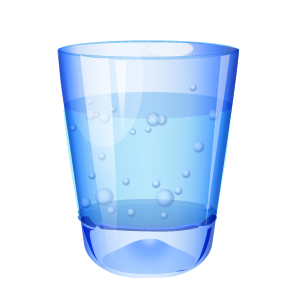
This image has format transparent PNG with resolution 288x288.
You can download this image in best resolution from this page and use it for design and web design.
Water glass PNG with transparent background you can download for free, just click on download button.
Water glass, also called sodium silicate or soluble glass, a compound containing sodium oxide (Na2O) and silica (silicon dioxide, SiO2) that forms a glassy solid with the very useful property of being soluble in water. Water glass is sold as solid lumps or powders or as a clear, syrupy liquid. It is used as a convenient source of sodium for many industrial products, as a builder in laundry detergents, as a binder and adhesive, as a flocculant in water-treatment plants, and in many other applications.
Water glass has been manufactured since the 19th century, and the basic principles of making “silicate of soda” have not changed since that time.
Small quantities of dissolved water glass are used in the treatment of municipal water supplies as well as wastewater, where it adsorbs metallic ions and aids in the formation of loose agglomerations of particles called flocs, which filter the water of undesirable suspended materials.
Liquid sodium silicate reacts under acidic conditions to form a hard glassy gel. This property makes it useful as a bonding agent in cemented products such as concrete and abrasive wheels. It is also an excellent adhesive for glass or porcelain.
A traditional use for dissolved water glass is as a preservative for eggs. Fresh eggs stored under cool conditions in a viscous silicate solution will keep for months.
There are many formulations of sodium silicate, depending on the amounts of Na2O and SiO2. Also, there are other silicate glasses in which the sodium is replaced by another alkali metal, such as potassium or lithium. Some glasses are better suited than others for particular applications, but they all share the same property of being a glassy solid that dissolves in water to form an alkaline solution.
Borosilicate glass is a type of glass with silica and boron trioxide as the main glass-forming constituents. Borosilicate glasses are known for having very low coefficients of thermal expansion (≈3 × 10−6 K−1 at 20 °C), making them more resistant to thermal shock than any other common glass. Such glass is subjected to less thermal stress and can withstand temperature differentials without fracturing of about 165 °C (297 °F). It is commonly used for the construction of reagent bottles and flasks as well as lighting, electronics and cookware.
Borosilicate glass is sold under various trade names, including Borosil, Duran, Pyrex, Supertek, Suprax, Simax, Bellco, Marinex (Brazil), BSA 60, BSC 51 (by NIPRO), Heatex, Endural, Schott, Refmex, Kimax, and MG (India).
Borosilicate glass was first developed by German glassmaker Otto Schott in the late 19th century in Jena. This early borosilicate glass thus came to be known as Jena glass. After Corning Glass Works introduced Pyrex in 1915, the name became synonymous for borosilicate glass in the English-speaking world (in reality, a sizable portion of glass produced under the Pyrex brand has also been made of soda-lime glass since the 1940s). Borosilicate glass is the name of a glass family with various members tailored to completely different purposes. Most common today is borosilicate 3.3 or 5.0x glass such as Duran, Corning33, Corning51-V (clear), Corning51-L (amber), International Cookware's NIPRO BSA 60, and BSC 51.
In addition to quartz, sodium carbonate, and aluminium oxide traditionally used in glassmaking, boron is used in the manufacture of borosilicate glass. The composition of low-expansion borosilicate glass, such as those laboratory glasses mentioned above, is approximately 80% silica, 13% boric oxide, 4% sodium oxide and 2–3% aluminium oxide. Though more difficult to make than traditional glass due to its high melting temperature, it is economical to produce. Its superior durability, chemical and heat resistance finds use in chemical laboratory equipment, cookware, lighting, and in certain kinds of windows.
In this gallery you can download free PNG images: Water glass PNG images free download